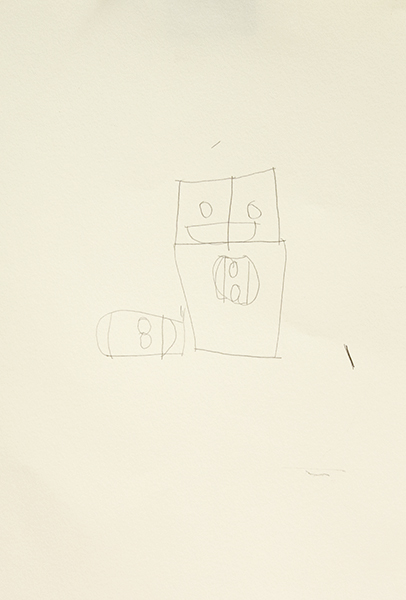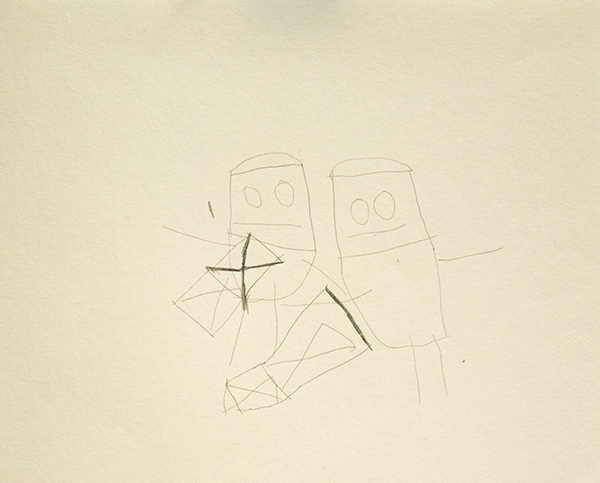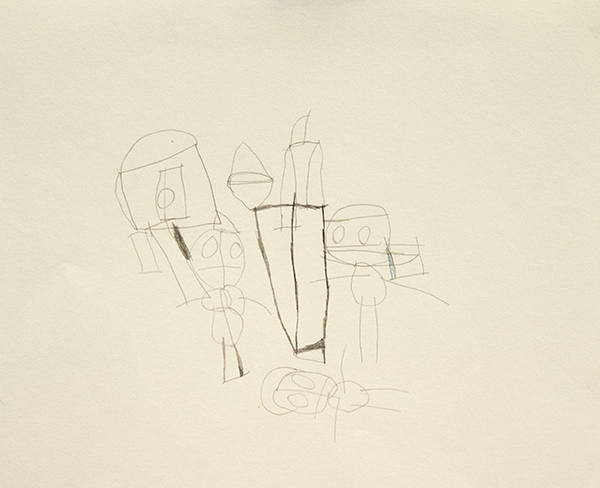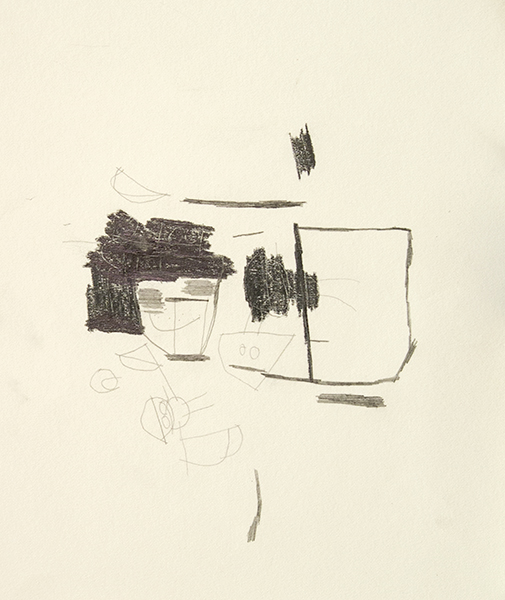Alan Constable has been creating and exhibiting work in various media for the past thirty years, including painting and drawing, but it is the extensive body of ceramic works he has formed over the past decade that has increasingly garnered attention and acclaim...
Read MoreSylvia Fragoso
Untitled, glazed ceramic
Untitled, glazed ceramic, 14" x 7" x 7", 2013
Untitled, glazed ceramic, 17" x 11" x 11", 2015
Untitled, glazed ceramic, 15" x 8" x 5", 2014
all images courtesy NIAD
Sylvia Fragoso’s methodically hand-built sculptures are crafted with a deceptive indelicacy and thick layering of glazes - small monuments in which form is defined by seeking rather than devising. Much like the ceramic work of Sterling Ruby or Julia Haft Candell, Fragoso reaches a compromise between concept and process. Where opportunities arise, she inserts symbolism that declares an identity for the work; subjects common in her drawings such as church and family are translated into physical form in a manner analogous to the way that her method of building with clusters of shapes on paper translates to her process of building with clay. References to function or representation are ultimately denied in favor of material manipulation and aesthetic - a revelation of the joy of making.
In a recent Art In America article The Happy Medium, Leah Ollman discusses the re-emergence of ceramics in the contemporary art discourse (especially in L.A.):
A new shift, roughly a decade old, has been catalyzed not by a single or even a few strong personalities, but by a broader redefinition and realignment of creative practice. Increasingly post-disciplinary, artists roam freely among mediums, unencumbered by traditional boundaries and hierarchical divisions. Many show a renewed interest in work of the hand, which they see as an antidote to theory- and concept-driven art. A messy physicality is often their (defiant) answer to the disembodied digital; theirs is a rising constituency for authenticity which advocates the material over the virtual.
This shift has extended to progressive art studios as well; in addition to Fragoso, other self-taught artists creating exceptional ceramic work are Mirov Menefee of The Canvas in Juneau, Alan Constable and Chris Mason of Arts Project Australia in Victoria, Cameron Morgan of Project Ability in Glasgow, Tanisha Warren at Creative Growth in Oakland, and Billy White, also of NIAD.
Fragoso (b. 1962) has exhibited recently in Hold Onto Your Structure : The Ceramics of Sylvia Fragoso at NIAD Art Center (2016), Telling It Slant organized by Courtney Eldridge at the Richmond Art Center (2015), Visions et Créations Dissidents at Musée de la Création Franche in Bégles, France (2014), ArtPad SF at the Phoenix Hotel in San Francisco (2013), and extensively in group exhibitions at NIAD, where she has maintained studio practice for many years.
Untitled, graphite on paper, 24" x 18"
Deveron Richard
Sectra Shower, watercolor on paper, 18" x 24”, 2014
The Milkets, watercolor on paper, 26" x 32”, 2015
The Planets, watercolor on paper, 17.25" x 23.5”, 2009
A Border Between Unicorns, watercolor on paper, 19" x 25.5”, 1996
Deveron Richard maintains a creative practice at one of many ECF art centers in the LA area (previously discussed by Disparate Minds in terms of their relationship to DAC Gallery). His inaugural solo show is currently on view in LA at the Good Luck Gallery through May 21st. From the Good Luck Gallery:
“An idiosyncratic iconography of visionary space travel and anthropomorphic sexuality arrives via the South Bay of Los Angeles through the singularly fertile imagination of Deveron Richard. Winged horses in brassieres and high heels glide peacefully around the cloud-enshrouded towers of a futuristic city, polar bears in lipstick and slit dresses prance through a fluorescent arctic landscape, and provocatively-attired unicorns face off on a hallucinatory geometric color grid. These hybrid creatures of exaggerated femininity exude a quirky eroticism. Rendered in watercolor with a distinctively saturated palette, inventive draftsmanship and hypnotic backdrops of complex rhythmic patterning. Other works depict interplanetary battles with rockets hurtling through galaxies and deadly beams shooting into space.”
Grace Coenraad
Grace Coenraad, Untitled, micron, sharpie, graphite, and india ink on paper, 2015, 16" x 16"
Grace Coenraad, Untitled, micron, sharpie, and india ink on paper, 2015, 22" x 22"
When I first painted a number of canvases grey all over (about eight years ago), I did so because I did not know what to paint, or what there might be to paint: so wretched a start could lead to nothing meaningful. As time went on, however, I observed differences of quality among the grey surfaces – and also that these betrayed nothing of the destructive motivation that lay behind them. The pictures began to teach me. By generalizing a personal dilemma, they resolved it.
Gerhard Richter, From a letter to Edy de Wilde, 23 February 1975
Coenraad’s dark, minimalist works are the product of a measured and slow process, executed with extreme diligence. Using 08 black microns, traditional pen and ink nibs, and occassionally graphite, she densely hatches careful lines, which slowly collect on the surface over many hours of work. This method is a clear path leading to an absolute resolution - the surface being obscured by black. The magic of these pieces (although they’re inextricable from the story of the steadfast execution of this simple method) lies in content that’s fantastically nuanced and complex. The black square is a subtle, jagged field comprised of various sheens and tones - certain patches are tinted by an initial application of bright watercolor (often pink or blue) that has bled through the subsequent, inevitable layer of black. The marks made using microns are incised, and those created with india ink and nib lift the paper slightly away from the surface, resulting in a textured surface reminiscent of Richard Serra’s black oil stick drawings. And much like the reductive, sublime paintings of Richter or Clyfford Still, Coenraad demonstrates that the honest act of mark-making isn’t reduced when it’s stripped of intentions or illusion. Conversely, it only becomes more revealing and mysterious.
After his first museum exhibition of entirely black drawings in 2011, Richard Serra was described by critic Roberta Smith as hermetic, abstract, difficult, and austere, an assessment that he accepted, describing it as “a virtue.” Explaining that art has to be difficult, Serra said that drawing independent of the flamboyance of color interaction, mark-making on its own, in black on white, proves to necessitate invention, thereby providing a “subtext” for how an artist thinks. For him, allover black works were a move to escape that convention of drawing as a “form to ground problem” to create works concerning “interval and space” rather than image.*
Coenraad didn’t stumble upon this principle inadvertently like Richter; for her, it’s a process that reflects a way of being. It is, as Serra articulates, an extension of the thought process and more. To a degree that’s rarely seen for non-performative artists, Coenraad is an artist for whom the boundary between life and art is blurred. Every task is executed with the same resolute sensibility, engaging life with a singular and sophisticated method in pursuit of perfection. Every bite of food is carefully selected and examined before being eaten (ingredients of an undesirable color rejected), every mundane task is afforded great consideration. For years she has worked part-time at a document destruction facility, where no one has been able to compel her to obliterate more than one document at a time. At home, blackening crossword puzzle squares for hours with ballpoint pen or sharpie is part of her daily ritual.
In the studio, Grace is fully immersed in her practice - working with her face close to the surface, she becomes absent from anything exterior of the drawing process. Occasionally she will stop and look around the room for a moment like a deep sea diver rising briefly to the surface, before submerging again. Grace doesn’t discuss her work, not because she can’t, but because there seems to be nothing necessary to say once a piece is finished.




Between her larger, long-term works, Coenraad sometimes creates small graphite sketches, thoughtful experiments that serve as a point of entry into her mysterious thought process. The placement of faces demonstrate the dynamics of orientation in her drawings. The coexistence of elements in combination with turning the paper many times while working isn’t incidental to the process, but essential to it.
Coenraad is a Juneau-based artist who maintains a studio practice at The Canvas in Juneau, Alaska. Her work will be included in an upcoming group exhibition curated by Disparate Minds writers Tim Ortiz and Andreana Donahue at The Canvas' exhibition space in December.

